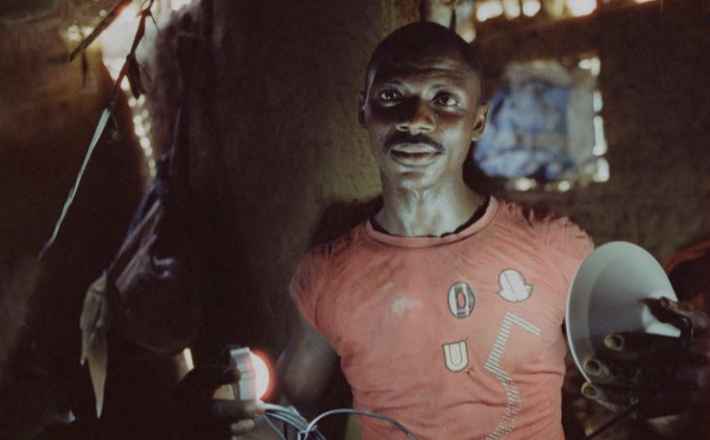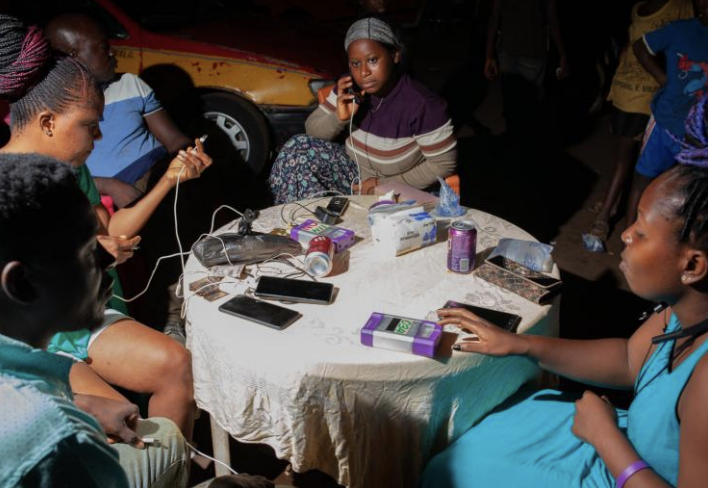
Beyond the Grid Fund for Africa (BGFA) Aggregate Report
About BGFA
The Beyond the Grid Fund for Africa (BGFA) is a multi-donor facility established and managed by Nefco – the Nordic Green Bank. BGFA is implemented by Nefco, with the support of two project implementation partners: NIRAS, a development and engineering consultancy company headquartered in Denmark, and the Renewable Energy and Energy Efficiency Partnership (REEEP), an international multilateral partnership based in Vienna, Austria.
BGFA and 60 Decibels
We conducted an assessment on the impact of BGFA-financed companies providing electricity access to rural users in Sub-Saharan Africa. Our study concludes that through the results-based financing provided to the companies by BGFA, the quality of life for end users with access to off-grid electricity appliances has significantly increased. The study was commissioned by Nefco in 2024 and carried out during September-November 2024.
The main aim of the study was to better understand the socio-economic profiles of rural and peri-urban households in Sub-Saharan Africa and assess the impacts of BGFA activities on end users’ quality of life.
“BGFA is currently conducting a mid-term evaluation to assess programme progress. To initiate this process, we have chosen to focus on what matters most: understanding customer satisfaction among end users and identifying any changes in their quality of life. After all, our core mission is to expand energy access to underserved populations across Sub-Saharan Africa. This initial study, conducted by 60 Decibels, provides valuable insights that inform the broader evaluation. The mid-term review is ongoing and includes additional analytical components to ensure a comprehensive understanding of programme impact,” comments Petra Mikkolainen, Senior Monitoring, Evaluation & Learning Manager at Nefco.

Methodology
The survey consisted of three main components:
Interviews with end users – Over 5,000 telephone interviews were carried out with customers of the chosen BGFA portfolio companies. Seven BGFA portfolio companies from Liberia, Uganda and Zambia – the three countries with the most energy saving credits sales under BGFA to date – were included in the survey, representing over 80% of the ESSs achieved by BGFA at the time of the survey.
BGFA Portfolio insights – The second component of the study involved compiling responses from ten companies across all six BGFA partner countries that are part of the BGFA portfolio and were also surveyed under other programmes between 2022 and 2024. These additional surveys focused specifically on non-BGFA-funded activities, even though they involved the same companies. This approach enabled benchmarking BGFA results against a comparable dataset, offering deeper insights into the types of end users BGFA projects are reaching and how programme outcomes compare with similar activities carried out by the same companies.
Global benchmarking of BGFA results – The third component involved comparing the survey results of the seven chosen BGFA projects and those of the additional ten surveys against the 60dB Energy Global Benchmark. Some indicators were also compared to the 60dB Energy Africa Benchmark. This analysis allows conclusions to be drawn on (1) how well BGFA portfolio companies perform overall and (2) BGFA’s ability to support energy service providers to deliver results and impacts based on the seven chosen BGFA companies.
Key Insights
-
The BGFA Portfolio is reaching low-income households, serving previously unreached families, and creating positive impact with happy customers
4 in 5 customers are accessing a new kind of energy service for the first time, and 94% say it fully meets their needs.
BGFA ESPs aren’t just expanding access, they’re transforming daily life. Two-thirds of customers have seen their quality of life significantly improved, 3 in 5 are spending less on energy, and three-quarters have moved up the energy ladder.
The Income Inclusivity Rate of the BGFA Portfolio is above Benchmark; with ESPs reaching a relatively representative proportion of low-income customers relative to national poverty rates.
Customer satisfaction is above Benchmark with all BGFA Portfolio ESPs individually being above the 60 Decibels Energy Benchmark. This is something to be celebrated. -
Customer challenges and issue resolution need some attention
2 in 5 customers have experienced challenges using their ESS, and over two-thirds of those challenges are unresolved. Issues often relate to technical faults, poor customer service, and payment problems.
Impact and satisfaction are affected by challenges; if a customer cannot use their product/service to full effect, they cannot realise the full potential benefits of it. And customers are less likely to speak positively about their experience to their friends, family, and network.
Detractors talked about service quality, pricing transparency, and product reliability as pain points — all fixable areas that could unlock even stronger loyalty.
Reviewing the common challenges faced by customers and identifying ways to reduce, mitigate, and avoid them can help lower the Customer Challenge Rate. Check out page 38 of the 60 Decibels Why Off-Grid Energy Matters 2024 for ideas to address common challenges. -
ESPs are supporting customers to feel better able to weather future potential shocks
Over half of customers feel more prepared for future potential climate shocks and a third say they believe their ability to cope or recover is improved thanks to their ESS. This demonstrates the role energy access can play in resilience in for climate-vulnerable communities.
Productive use of energy remains a largely untapped opportunity, with 16% of customers using their energy services for income-generating activities. Unlocking this could translate perceived resilience into real economic security.
BGFA could explore further which technologies and business models are most likely to be support climate resilience for customers, with a focus on ensuring energy access not only powers homes but also sustains livelihoods in the face of climate risks.